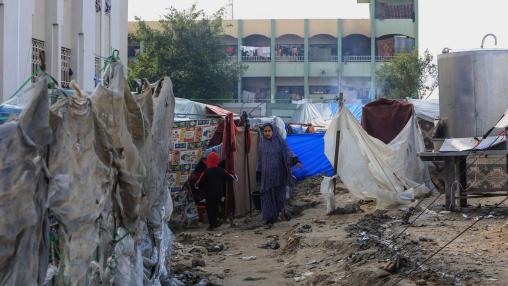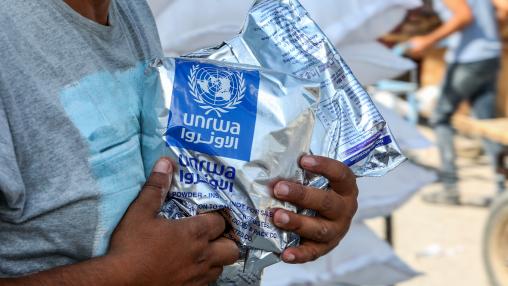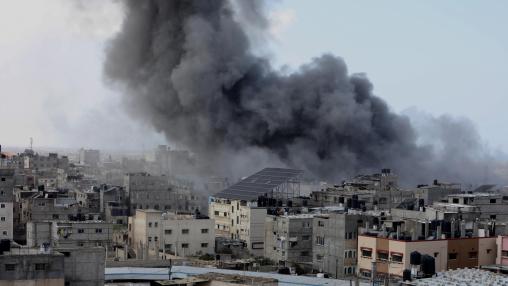
Famine in Gaza: How Research Can Aid Recovery and Prevent Future Food Crises
As Gaza continues to experience unprecedented food crisis, a new commentary published in Nature takes a look at how research can forecast the long-term impacts and help policymakers develop more effective humanitarian support networks and systems to ensure post-conflict resilience.

FEWS Net Gaza Update: Food Aid Increases in April But Food Supplies, Access Remain Low
Despite an increase in food aid delivered to the region, the food security situation in the Gaza Strip remains dire, according to an updated FEWS Net report released in late April.

Famine in Gaza
Is it too late to save Gaza’s population from famine? The latest assessment of the Integrated Food Security Phase Classification (IPC) global partnership suggests this is imminent for at least half the population of 2.2 million.

Disaster Events Lead to Trillions of Dollars in Agricultural Losses: New FAO Flagship Report Released
Over the past three decades, the world lost as much as $3.8 trillion in agricultural products as a result of disaster events, according to a new flagship report from the UN Food and Agriculture Organization. That equates to a loss of around 5 percent of global agricultural GDP per year and has serious implications for food security, agricultural livelihoods, and the sustainability of the global agrifood system.

Urbanization Poses Challenge, Opportunity for Food Security
An estimated 122 million more people around the world faced hunger in 2022 than in 2019, according to the 2023 State of Food Security and Nutrition in the World (SOFI) report, released in December. While progress in reducing hunger was made in Asia and Latin America between 2021 and 2022, hunger continued to rise in Africa, as well as in Western Asia and the Caribbean.
If these trends continue, the report’s authoring organizations[1] warn, the world will not be able to achieve the Sustainable Development Goal of ending hunger by 2030.
Global and Regional Trends

The population of Gaza is on the brink of famine
The food insecurity situation in the Gaza Strip is becoming increasingly dire. A recent blog of just 10 days ago and based on an assessment by the World Food Programme pointed out that during October and November, 80 percent of the population in Gaza was displaced and more than 80 percent suffered food deficiencies.

Crisis in Gaza: The Nexus of Conflict and Food Insecurity
Introduction
Nearly 80 percent of Gaza’s population has been displaced in the ongoing conflict, which has entered its second month. A recent World Food Programme rapid food security assessment conducted during the temporary humanitarian pause in fight in late November has found evidence of unprecedented humanitarian crisis, including widespread food insecurity.
Background

Food Security and Incomes in Guatemala During Food Crises
Since early 2020, Guatemala has faced a multitude of food security shocks: from the outbreak of the COVID-19 pandemic and resulting restrictions on movement and disruptions to agricultural trade to widespread flooding following several major tropical storms to skyrocketing staple food prices. A new article in World Development examines the immediate and longer term impact of these shocks on households’ incomes, diets, food security, and migration decisions, particularly in rural areas.

Good News for Some Countries, But Acute Food Insecurity Persists Worldwide: Global Report on Food Crises Midyear Update Released
The Global Report on Food Crises (GRFC) 2023 Midyear Update finds that while some countries have seen improvements in hunger and malnutrition in the first half of 2023, high levels of acute food insecurity remain worldwide. As in previous years, conflict, climate change, and economic shocks continue to be the main drivers of food crisis, with conflict playing the predominant role from January through August 2023.

122 Million More People Were Hungry in 2022: 2023 SOFI Report Released
The number of people facing hunger around the world has increased by more than 122 million from 2019, according to the newly released annual State of Food Security and Nutrition in the World (SOFI) report, , a joint publication by the UN Food and Agriculture Organization (FAO), International Fund for Agricultural Development (IFAD), UNICEF, World Food Programme, and World Health Organization (WHO).